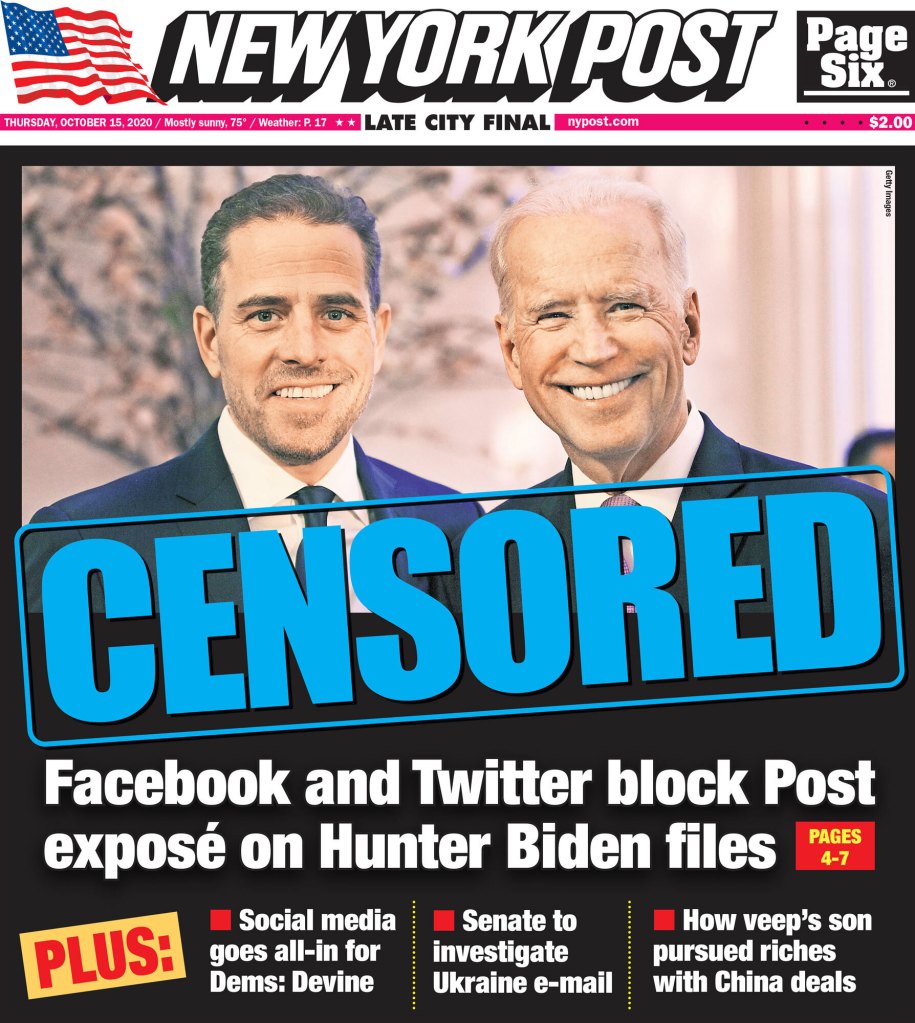Suppression of right-wing users exposed in latest ‘Twitter Files’
The second installment of Elon Musk’s “Twitter Files” dropped Thursday night and reveals how the social media giant was secretly “blacklisting” conservative tweets and users.
Independent journalist Bari Weiss detailed in a series of posts how Twitter used so-called “shadow banning” to limit the visibility of tweets coming from far-right users.
Conservative talk show host Dan Bongino, Stanford University’s anti-COVID lockdown advocate Dr. Jay Bhattacharya, and right-wing activist Charlie Kirk were among the users targeted for suppression by Twitter, according to Weiss.
The former New York Times and Wall Street Journal writer said that the blacklists were built “in secret” and “without informing users.”
“A new [Twitter Files] investigation reveals that teams of Twitter employees build blacklists, prevent disfavored tweets from trending, and actively limit the visibility of entire accounts or even trending topics — all in secret, without informing users,” Weiss wrote in a tweet Thursday.
She notes that the company strayed from its original mission of giving “everyone the power to create and share ideas and information instantly, without barriers” by developing the methods to suppress specific individuals.
Dr. Bhattacharya’s account, for example, was flagged as being on a “trends blacklist,” according to Weiss, who shared an image of his account from Twitter’s point-of-view with the yellow tag indicating the restriction.
“Take, for example, Stanford’s Dr. Jay Bhattacharya who argued that Covid lockdowns would harm children. Twitter secretly placed him on a ‘Trends Blacklist,’ which prevented his tweets from trending,” Weiss wrote.
Catch up on Twitter’s censorship of The Post’s Hunter Biden laptop story
An image of Bongino’s account showed a similar yellow notice that read “search blacklist.”
“Or consider the popular right-wing talk show host, Dan Bongino who at one point was slapped with a ‘Search Blacklist,’” Weiss wrote.
Weiss then shared an image of Kirk’s account with a “Do Not Amplify” message.
”Twitter set the account of conservative activist Charlie Kirk to ‘Do Not Amplify,’”the independent journalist tweeted.
Weiss notes that top Twitter executives, including former head of legal policy and trust Vijaya Gadde and head of product Kayvon Beykpour, have denied in the past that the company “shadow bans” users.
“We do not shadow ban,” Gadde and Beykpour said in 2018, per Weiss, “And we certainly don’t shadow ban based on political viewpoints or ideology.”
Weiss reports that the practice of suppressing conservative voices is known internally as “Visibility Filtering” or “VF.”
“Think about visibility filtering as being a way for us to suppress what people see to different levels. It’s a very powerful tool,” a senior Twitter employee told Weiss.
“Visibility Filtering” allows the company to “block searches of individual users; to limit the scope of a particular tweet’s discoverability; to block select users’ posts from ever appearing on the ‘trending’ page; and from inclusion in hashtag searches,” according to Weiss.

“We control visibility quite a bit. And we control the amplification of your content quite a bit. And normal people do not know how much we do,” a Twitter engineer told Weiss.
Weiss’s tweets followed Friday’s bombshell revelations by fellow independent journalist Matt Taibbi, whose Twitter posts were promoted by new company owner Elon Musk as “what really happened with the Hunter Biden suppression story by Twitter.”
Taibbi said his reporting uncovered the “extraordinary steps” Twitter took in response to The Post’s blockbuster scoop about Hunter Biden’s infamous laptop in October 2020, including “removing links and posting warnings that it may be ‘unsafe.’”
“They even blocked its transmission via direct message, a tool hitherto reserved for extreme cases, e.g. child pornography,” he wrote.
Taibbi said the decision was made behind the back of Twitter founder and then-CEO Jack Dorsey, with former general counsel Vijaya Gadde — who was reportedly fired by Musk when he took over in October — “playing a key role.”
Undated, internal company messages showed Gadde and others discussing how the company would cite concern the story was based on “hacked materials,” even though it had no evidence to support that notion.
A former employee reportedly told Taibbi that “everyone knew this was f–ked.”
But the company’s “response was to essentially to err on the side of…continuing to err,” Taibbi said.
In addition to suppressing the story, Twitter also locked out The Post from its main Twitter account after demanding the removal of six tweets — which The Post refused.
After a two-week stalemate sparked outrage at Twitter, the social media giant caved and unlocked the account, saying it was revising its “Hacked Materials Policy” and “updating our practice of not retroactively overturning prior enforcement.”
Last week, former Twitter head of trust and safety Yoel Roth admitted during a interview that it wrong to suppress The Post’s reporting, saying that “for me, it didn’t reach a place where I was comfortable removing this content from Twitter.”
And on Tuesday, Musk announced that he’d fired Twitter deputy general counsel Jim Baker, a controversial former top FBI lawyer, over his “possible role in suppression of information important to the public dialogue.”
Musk said he’d questioned Baker about Twitter’s response to the laptop story and found his answers “unconvincing.”
Taibbi also tweeted Tuesday that Baker was behind the delay Friday in releasing his “Twitter Files” tweets because he’d been “vetting” the underlying material “without knowledge of new management.”
Taibbi said Weiss uncovered Baker’s involvement when she learned “that the person in charge of releasing the files was someone named Jim.”
“When she called to ask ‘Jim’s’ last name, the answer came back: ‘Jim Baker,’” Taibbi wrote.
“‘My jaw hit the floor,’ says Weiss.”
This is a developing story
Read the full article Here






